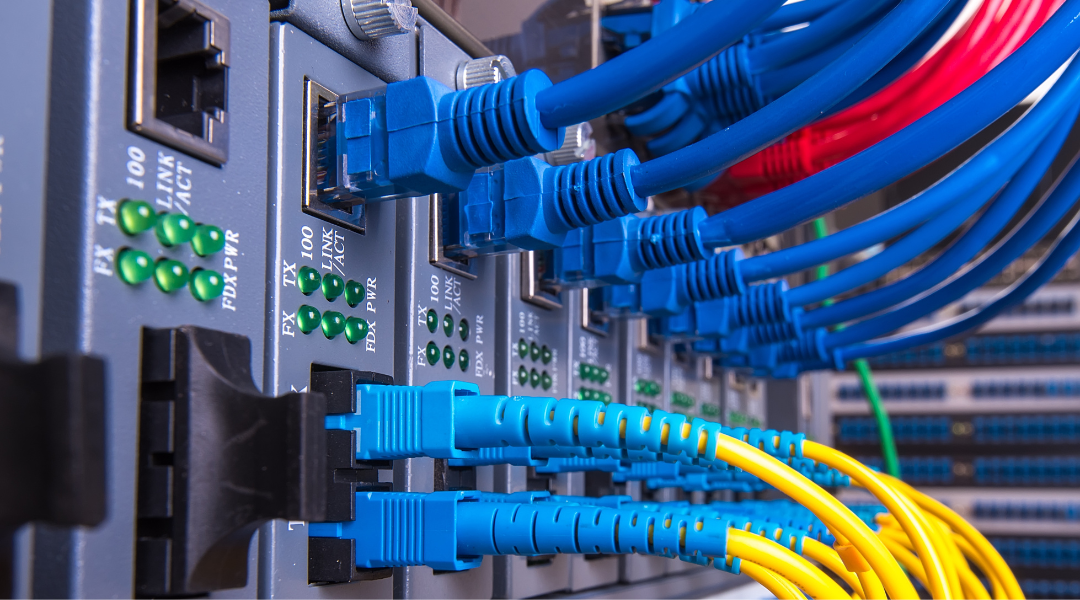What Is Structured Cabling and Why Your Business Needs It
In today’s fast-paced, tech-driven business environment, your building’s infrastructure needs to keep up. Structured cabling forms the backbone of any commercial IT and communication system—enabling reliable data, voice, video, and building automation connectivity throughout the premises.
Whether you're outfitting an office, warehouse, retail space, or multi-use commercial site, understanding structured cabling is essential to ensure your systems are fast, scalable, and future-ready.
What Is Structured Cabling?
Structured cabling refers to a standardised system of organised cabling and hardware that provides a comprehensive telecommunications infrastructure for commercial buildings. Unlike ad-hoc cabling, where wires are installed as needed (creating a messy and hard-to-manage network), structured cabling is pre-planned and neatly organised from a central location, known as the patch panel or communication cabinet.
It includes all the components needed for network and device connectivity:
Cat6 / Cat6a / Cat7 cabling
Patch panels
Data cabinets or comms racks
Wall outlets and network points
Fibre optic backbone (for larger or multi-storey properties)
Structured cabling supports a wide range of systems including internet access, VoIP phones, access control, CCTV, smart building controls, and more.
Why Is Structured Cabling Important for Commercial Buildings?
A well-designed structured cabling system is critical for modern businesses that rely on stable and fast communication networks. Here's why it matters:
1. Future-Proofing and Scalability
Structured cabling is designed to grow with your business. As you add more devices, move desks, or install new technologies like VoIP or building automation, the system can easily accommodate changes without the need to rip out old cabling.
2. Improved Reliability and Uptime
Organised, tested cabling reduces the risk of faults, interference, or signal loss. When issues do arise, they’re easier to diagnose and resolve—minimising downtime for your team.
3. Faster Speeds and Better Performance
High-performance cabling like Cat6a or Cat7 ensures that your network can support gigabit and multi-gigabit speeds—vital for data-heavy tasks like video conferencing, cloud backups, or server access.
4. Neatness and Professional Presentation
Tangled wires aren’t just a health hazard—they make maintenance difficult. Structured cabling keeps everything tidy and labelled, housed in racks or cabinets, and easy to access.
5. Cost Efficiency Over Time
Although upfront costs can be higher than patchwork solutions, structured cabling saves money over time by reducing rework, maintenance, and network faults.
Common Use Cases for Structured Cabling
Open-plan offices with multiple workstations
Warehouses needing robust Wi-Fi and CCTV
Retail environments with tills, CCTV, and audio systems
Hotels and leisure centres with Wi-Fi, room access, and automation
New builds or renovations preparing for future tech upgrades
What’s Involved in Installing Structured Cabling?
At Carter’s Electrical Services, we provide end-to-end structured cabling services tailored to your commercial space:
Site Assessment & Planning
We evaluate your layout, equipment needs, and growth plans to design a scalable cabling network.Cable Installation
We install Cat6/Cat7 or fibre optic cables to all required zones: desks, meeting rooms, WAPs, printers, CCTV locations, and more.Termination & Labelling
All cables are terminated cleanly into patch panels and sockets, labelled clearly for ease of management.Testing & Certification
We test every connection for speed, reliability, and compliance with UK networking standards.Handover & Support
We provide full documentation, support plans, and guidance for adding future connections.
Ready to Upgrade Your Commercial Network?
If you’re moving premises, expanding your business, or struggling with unreliable connections, structured cabling is a wise investment. At Carter’s Electrical Services, we deliver structured cabling solutions for commercial buildings across Oxfordshire and beyond—built to support your business today and into the future.
📞 Contact us today to book a consultation and get expert advice on your commercial cabling needs.
Frequently Asked Questions
-
Structured cabling is organised, centralised and future-proof, whereas standard wiring is often installed in a piecemeal way and harder to scale or maintain.
-
Most commercial setups use Cat6, Cat6a, or Cat7 cabling. Fibre optic cable is used for high-speed backbones or between floors.
-
Yes—access points are hardwired to the network using structured cabling, ensuring strong, consistent wireless coverage throughout your building.
-
It depends on the building size and scope. A typical office fit-out might take a few days to a week.
-
The upfront cost is higher than unmanaged wiring, but it’s more reliable, scalable, and cheaper to maintain—making it cost-effective over time.

